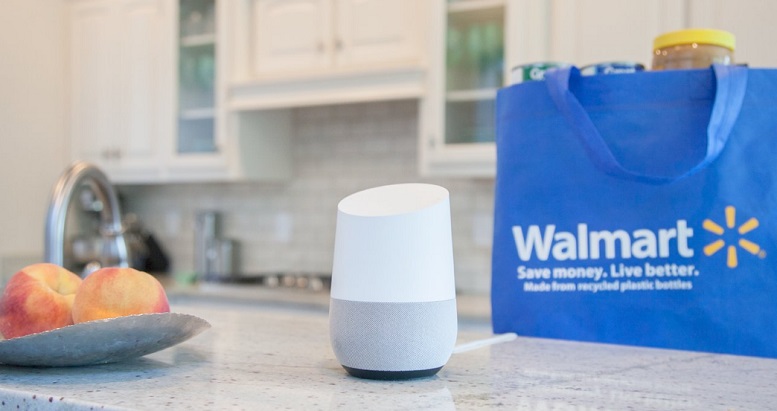In its never-ending attempt to resist Amazon’s (NASDAQ:$AMZN) retail takeover, Wal-Mart (NYSE:$WMT) has just announced a partnership with Google (NASDAQ:$GOOGL) to bring voice-activated shopping to its consumers. Launching as early as next month, Wal-Mart customers will be able to purchase the company’s products through a variety of voice-controlled Google Home devices. Additionally, Wal-Mart has made much of its products available for purchase through Google’s online retail and delivery site, Google Express. Both companies revealed the partnership via blog posts on Wednesday, August 23rd.
“We’re thrilled to partner with one of the most popular stores in America to help make your shopping faster and easier,” Google’s senior vice president Sridhar Ramaswamy expressed through the company’s blog, where the partnership was announced.
In a separate blog post written by the president of Walmart’s U.S e-commerce business, Marc Lore said, “This is just the beginning. We will continue to focus on creating new opportunities to simplify people’s lives and help them shop in ways they’ve not yet imagined.”
While it may seem like an unexpected partnership at first, it makes a lot of sense when one considers current situations, eMarketer’s (traded privately) analyst Krista Garcia noted. Wal-Mart has been working to strengthen its online presence since last year – what better way to do so than partnering up with one of the biggest online search engine and tech companies in the world?
Throughout the years, Amazon has been slowly taking over the retail industry. According to a survey distributed last year, about 55% of Americans’ first exposure to online shopping is through Amazon. Surveys also show that Amazon customers spend more on average per month when compared to Walmart. Amazon shoppers spend an average of $157 while Walmart shoppers spend only about $27 monthly. Since then, Wal-Mart has been working to close the gap.
One thing Wal-Mart has embraced in order to compete with Amazon is – as previously mentioned – through using voice-activation technologies. “Voice-activated ordering is still in its infancy,” Craig Johnson, who works at retail research firm Consumer Growth Partners (traded privately), explained. “Not very many people use it yet, but that means there’s also a really strong potential for growth.”
Wal-Mart is currently the second biggest online retailer behind Amazon. As such, Wal-Mart’s biggest rival right now is Amazon. Despite making about $486 billion in revenue in 2016 – about three times more than Amazon’s revenue of $136 billion – Wal-Mart is still on the prowl to further expand its online presence. Recently, the retail giant has acquired quite a handful of online companies such as ModCloth, ShoeBuy, MooseJaw, and Bonobos. It’s also upped the amount of products available for purchase on its online website. There are now more than 67 million products that customers can purchase online through Walmart.com. These products, thanks to Wal-Mart’s partnership with Google, will also be available for purchase through Google Express.
Through Google Express, existing Wal-mart customers who’d previously shopped through Wal-Mart’s website can link their accounts to Google. This will allow customers to purchase products they’d previously bought both online and in stores, Ramaswamy said. “For example, if you order Tide PODS or Gatorade, your Google Assistant will let you know which size and type you previously ordered from Walmart.”
Whether or not the partnership will make any significant impact on Wal-mart’s sales is yet to be seen.
Featured Image: twitter










